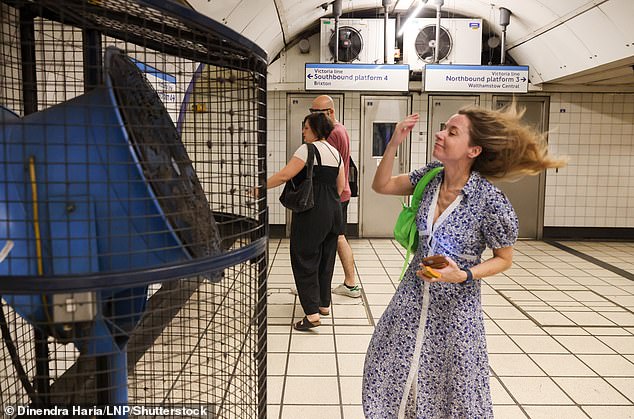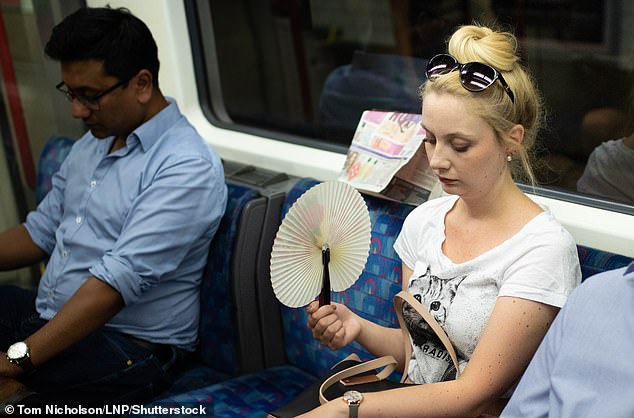Is your commute a sweltering ride? Interactive chart reveals the most popular London Underground routes over the years – and it’s bad news if you regularly use the Victoria Line
Many commuters know all too well that it has been unbearably hot on the London Underground in recent weeks.
And if you feel like your trip is getting warmer every year, you might be right.
MailOnline’s interactive graph shows average summer temperatures on seven popular Tube lines over the past decade.
Data from Transport for London (TfL) shows the Victoria Line is hotter than any other line, with a summer average of more than 30°C (86°F) – exceeding the legal maximum temperature for transporting livestock.
Passengers are also very warm on the Central, Bakerloo and Northern lines. The longest queues are among the most pleasant. How is your journey to work?
The graph shows temperatures for each year as an average for July and August – generally the two warmest months of the year.
Over the past ten years, temperatures have mainly fluctuated between 25°C and 30°C, but the Victoria Line in particular is showing a worrying increase.
The average for July and August 2014 was 26.5°C, but this rose to 31°C in July-August 2022 and 30.6°C in July-August 2023.
In 2023, the Victoria Line was the most popular line, not only in summer but throughout the year – just like in 2022.
The Victoria line, which runs between Brixton and Walthamstow Central, can get so hot because the entire line runs underground, meaning heat is trapped in the tunnel.
It is also one of the deepest lines – and the deeper a line, the less ventilation it receives from the world above.
According to one expert, pipe temperatures above 30°C not only feel uncomfortable, but can also be ‘hard on the body’.
The Victoria line – which runs between Brixton and Walthamstow Central – was the most popular line on the London Underground in summer 2023

In 2023, the Victoria Line was the hottest line, not only in summer but over the entire year – just like in 2022. In the photo, a woman cools off in front of a giant fan on the Victoria Line, 2023
Lewis Halsey, professor of health sciences at the University of Roehampton, said dangerous conditions depend on both temperature and humidity – how much water vapour is in the surrounding air.
When both humidity and temperature are high, the body finds it difficult to stay cool.
This is because it is more difficult to dissipate heat through evaporation of sweat into the air, which can lead to dangerous levels of overheating.
A busier pipe will make things worse because more people are breathing and sweating, which means more humidity.
‘People measure temperature and, less commonly, humidity, but it is these two factors together that determine how well we cope with the heat,’ Professor Halsey told MailOnline.

How dangerous a tube ride can be depends on both the temperature and humidity. Pictured: A woman cools down on the London Underground, July 2018
‘Over 30 degrees – we all know it’s not the most pleasant temperature, but it’s not going to kill us unless we’re incredibly weak.
But when it gets humid, which of course can happen in London, the body can struggle to release heat as quickly as we absorb it at temperatures above 30°C.
‘If the body cannot release heat as quickly as it absorbs it, there will be a net loss of heat into the body and the body temperature will rise.
‘And if your body temperature rises too high, then it’s over.’
If temperatures inside the tube rise above 40°C, the most vulnerable people could ‘collapse’ if humidity is high, Professor Halsey warned.
‘Some people are fine with that, some people aren’t. And of course it’s going to hit the elderly and the vulnerable the hardest,’ he told MailOnline.
Fortunately, TfL is working to roll out cooling and ventilation technologies to metro lines, particularly Victoria, Northern and Central.
Examples of this include installing air conditioning in the carriages, adding more ventilation shafts and using a more efficient braking system that does not generate heat.
